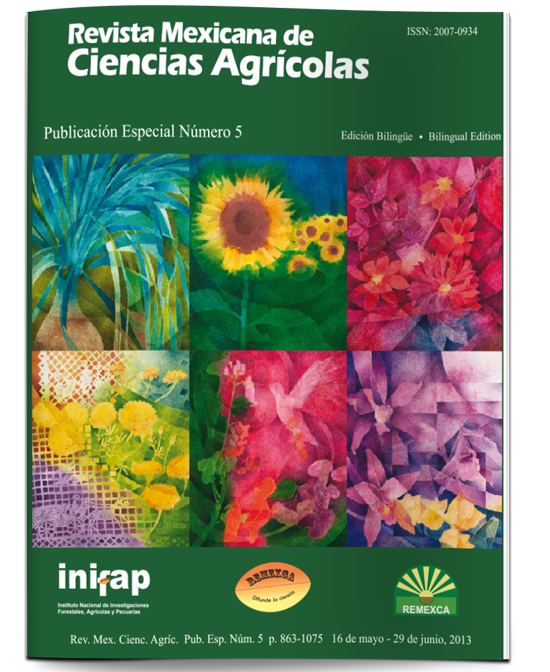Vernacular gardens ́ floristic composition in three Mexican rural communities
DOI:
https://doi.org/10.29312/remexca.v0i5.1305Keywords:
species diversity, native species, rural gardensAbstract
Mexico is one of the five megadiverse countries in the world, being the f lora the most important component in social, economic and biological terms. This biodiversity is partly reflected in the flora of the rural ornamental gardens. For this reason, the objective was to describe the floristic diversity within the gardens of three Mexican rural communities. However, it is unknown on what proportion the native ornamental flora is actually present. The research was conducted in 2012 in three Mexican rural communities (San Felipe Cuapexco in Puebla; Tepexilotla and Angostillo in Veracruz). The existing flora within the gardens was collected and taxonomically identified, calculating Simpson's and Shannon-Wiener ́s diversity indexes. Of the three communities, San Felipe Cuapexco had the highest species diversity (121). The largest number of species were exotic (107 species, 58%) compared to native(79species,42%).Weidentifiedthreetypesofstrata: herbaceous (62.3%), shrub (23.1%) and arboreal (14.5%). Despite the geographical location of each community, the floristic composition of these gardens was quite similar, identifying a total of 186 species belonging to 70 families and 156 genera. Roses are the most abundant species within the gardens, due to its characteristics such as color and flower type. We concluded that, in the f loristic composition of these gardens, exotic species had a higher proportion compared to native American ́s, let alone the native Mexican ́s. The most abundant species in the vertical structure were herbaceous, with ornamental and medicinal uses. The existing species variability within the gardens is determined by the diversity of uses, largely for ornamental, edible, spicing, medicinal and functional.
Downloads
Downloads
Published
How to Cite
Issue
Section
License
The authors who publish in Revista Mexicana de Ciencias Agrícolas accept the following conditions:
In accordance with copyright laws, Revista Mexicana de Ciencias Agrícolas recognizes and respects the authors’ moral right and ownership of property rights which will be transferred to the journal for dissemination in open access. Invariably, all the authors have to sign a letter of transfer of property rights and of originality of the article to Instituto Nacional de Investigaciones Forestales, Agrícolas y Pecuarias (INIFAP) [National Institute of Forestry, Agricultural and Livestock Research]. The author(s) must pay a fee for the reception of articles before proceeding to editorial review.
All the texts published by Revista Mexicana de Ciencias Agrícolas —with no exception— are distributed under a Creative Commons License Attribution-NonCommercial 4.0 International (CC BY-NC 4.0), which allows third parties to use the publication as long as the work’s authorship and its first publication in this journal are mentioned.
The author(s) can enter into independent and additional contractual agreements for the nonexclusive distribution of the version of the article published in Revista Mexicana de Ciencias Agrícolas (for example include it into an institutional repository or publish it in a book) as long as it is clearly and explicitly indicated that the work was published for the first time in Revista Mexicana de Ciencias Agrícolas.
For all the above, the authors shall send the Letter-transfer of Property Rights for the first publication duly filled in and signed by the author(s). This form must be sent as a PDF file to: revista_atm@yahoo.com.mx; cienciasagricola@inifap.gob.mx; remexca2017@gmail.
This work is licensed under a Creative Commons Attribution-Noncommercial 4.0 International license.



